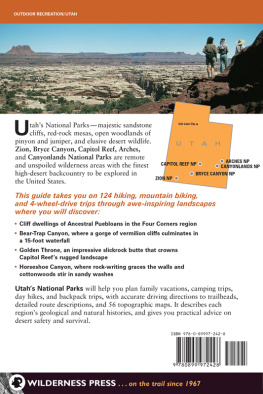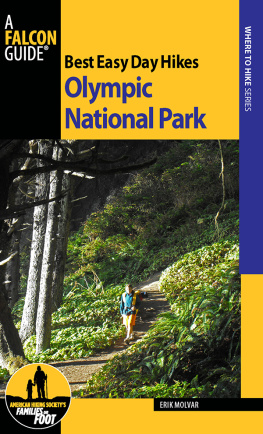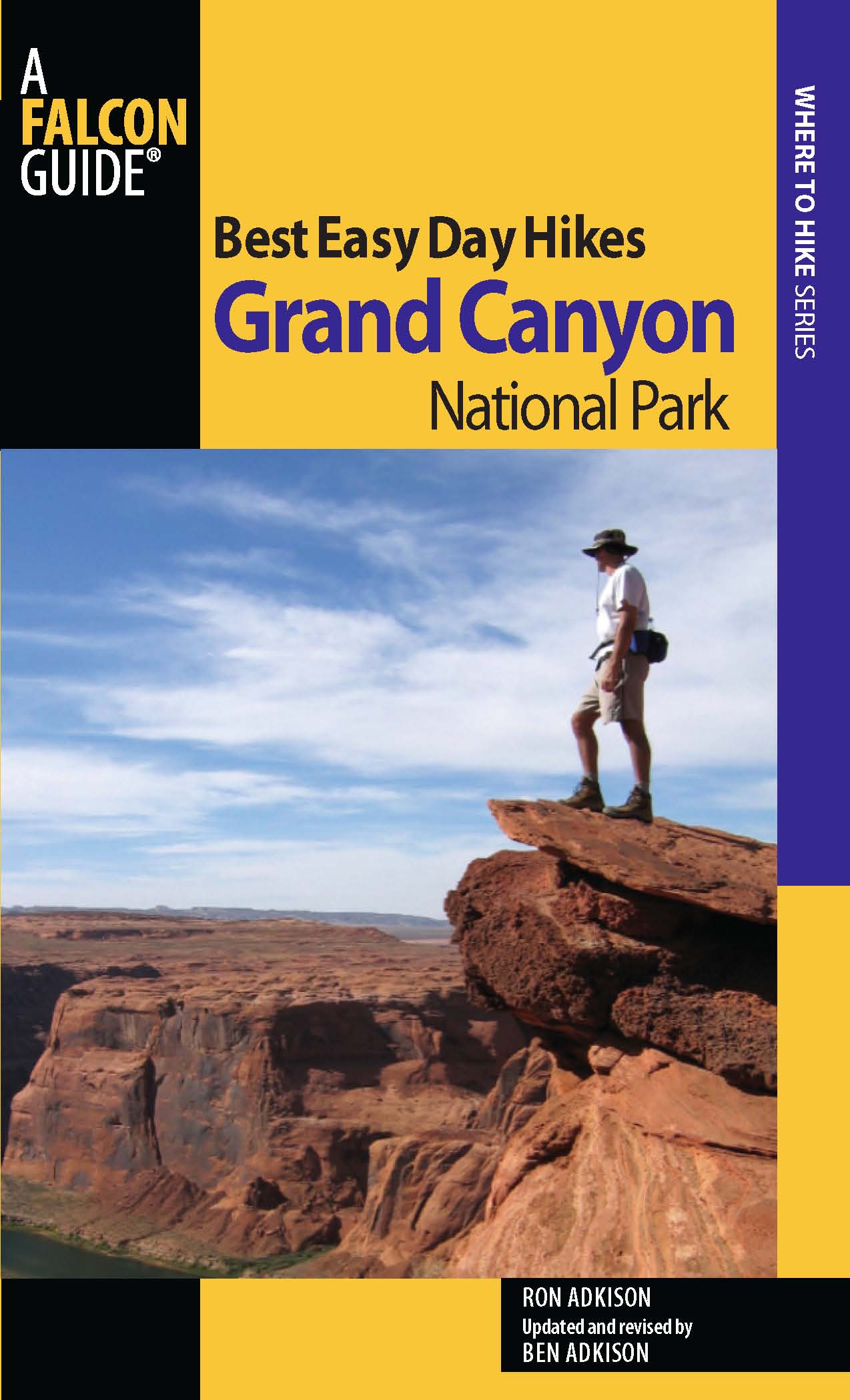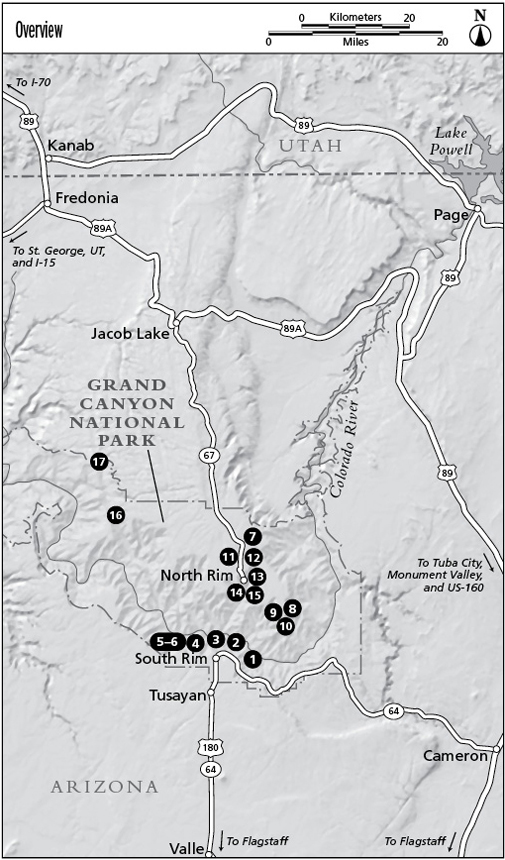Best Easy Day Hikes Series
Best Easy Day Hikes Grand Canyon National Park
Third Edition
Ron Adkison
Updated and revised by Ben Adkison
Copyright 2006, 2010 Morris Book Publishing, LLC
A previous edition was published in 1998 by Falcon Publishing.
All rights reserved. No part of this book may be reproduced or transmitted in any form by any means, electronic or mechanical, including photocopying and recording, or by any information storage and retrieval system, except as may be expressly permitted in writing from the publisher. Requests for permission should be addressed to Globe Pequot Press, P.O. Box 480, Guilford, CT 06437.
FalconGuides is an imprint of Globe Pequot Press.
Falcon, FalconGuides, and Outfit Your Mind are registered trademarks of Morris Book Publishing, LLC.
Maps by XNR Productions, Inc. Morris Book Publishing, LLC.
Library of Congress Cataloging-in-Publication Data
Adkison, Ron.
Best easy day hikes, Grand Canyon National Park / updated and revised by Ben Adkison. -- 3rd ed.
p. cm.
ISBN 978-1-4930-0283-2
1. HikingArizonaGrand Canyon National ParkGuidebooks. 2. TrailsArizonaGrand Canyon National ParkGuidebooks. 3. Grand Canyon National Park (Ariz.)Guidebooks. I. Title.
GV199.42.A72G7318 2010
917.91'320453dc22
2010011414
The author and Globe Pequot Press assume no liability for accidents happening to, or injuries sustained by, readers who engage in the activities described in this book.
Contents
Acknowledgments
Although changes to the landscapes of the Grand Canyon of the Colorado River (the Big Ditch) are almost imperceptible in our lifetimes, the complexities of land (and people) management in Grand Canyon National Park are in a constant state of evolution. Keeping a hiking guide to Grand Canyon National Park up to date is a never-ending process; and for me, its a labor of love.
Once again, I offer my humble and grateful thanks to those who were so generous with their advice, expertise, guidance, and wisdom in the previous editions of this book: John Rihs, Andy Thorstenson, Bil Vandergraff, Bryan Wisher, Steve Sullivan, and Helen Fairly.
Many management decisions that affect visitors have taken place since the first edition of this book was published in 1998, particularly on the South Rim. Todd R. Berger, managing editor of the Grand Canyon Association, and Judy Hellmich, chief of interpretation at Grand Canyon National Park, offered invaluable assistance and guidance during the update of this edition. Thank you.
Last but certainly not least, my wife and best friend, Nancy, provided me with the support and inspiration to make the third edition of Best Easy Day Hikes Grand Canyon possible.
Ron Adkison
Introduction
Although thousands of backpackers flock to Grand Canyon National Park each year, many more thousands of visitors dont have the time or desire to undertake a multiday backpack trip below the canyon rim. Luckily, the park offers many excellent day hiking opportunities, and some of the park trails are suitable for novice hikers, even families with small children. Unlike backpacking in the Grand Canyon, day hiking is free and requires no permits.
This indispensable guide to the Canyons best easy day hikes is an abridged version of the comprehensive Hiking Grand Canyon National Park (FalconGuides). It is the only book dedicated exclusively to day hiking trails in the Grand Canyon. For visitors on a tight schedule or anyone wishing to take a short walk on the parks excellent trails, this book allows readers to quickly and easily choose hikes best suited to their abilities, goals, and time constraints.
The seventeen day hikes described in this book range in length from less than 1 mile to nearly 12 miles long, although most hikes average between 2 and 3 miles. Most hikes follow plateau-top trails with minimal elevation gain and loss. Also included are longer plateau-top day hikes that will satisfy more serious hikers who are budgeting time and energy. Since no book of day hikes in the Grand Canyon would be complete without a few hikes below the canyon rim, some of the easier Inner Canyon day hikes are included here for energetic and fit hikers who wish to sample the Canyons inner depths. Almost all of the hikes in this book are round-trip hikes, tracing well-defined trails that are easy to follow. Most of these trails lead to dramatic vista points.
Hikers should bear in mind that hiking anywhere in Grand Canyon National Park can be challenging. All hikes begin at moderately high elevations, ranging from 6,600 to 8,800 feet. Hikers not acclimated to high elevations should take it easy for a few days before tackling a trail leading below the rim. Hikes below the rim, even those of short distance, can be very difficult for hikers unused to the rigors of Grand Canyon hiking.
For more information about Grand Canyon National Park and its network of trails, contact:
Grand Canyon National Park
P.O. Box 129
Grand Canyon, AZ 86023
(928) 638-7888
www.nps.gov/grca
Maps
A variety of good maps show the trails of Grand Canyon National Park, and I recommend two for users of this book.
The first is the Trails Illustrated Grand Canyon National Park topographic map, which shows all the trails in the park, many beyond the scope of this book, from River Mile 42 to River Mile 139 near Deer Creek in the central Grand Canyon. Trails Illustrated maps are available at many stores and gas stations in communities adjacent to the park; at the visitor center at Canyon View Information Plaza; at Market Plaza on the South Rim; at the General Store on the North Rim; and at the North Rim Country Store on the Kaibab Plateau. To order Trails Illustrated maps from the Grand Canyon Association, call (928) 638-2481 or visit www.grandcanyon.org.
The second map I recommend is particularly useful for navigating forest roads on the Kaibab Plateau. It is the North Kaibab District Map of the Kaibab National Forest. You can get Kaibab National Forest maps at the Tusayan Ranger Station, a short distance north of the town of Tusayan; near the south entrance to the park; at the North Kaibab Ranger Station in Fredonia; and at the Kaibab Plateau Visitor Center at Jacob Lake.
The U.S. Geological Survey (USGS) and Earthwalk Press also put out good maps of the Canyon area. These maps are available at Market Plaza on the South Rim.
Zero Impact
The desert landscape of the Grand Canyon appears deceptively durable. Actually it is very fragile. Once damaged, the desert recovers slowly and may not heal completely in your lifetime, if at all. Soils in the Grand Canyon are thin to nonexistent, and plants and desert creatures have evolved a delicate balance of survival. The simple acts of walking off the trail (even for a short distance), crushing plants, or moving rocks disrupt the balance that desert plants and animals have achieved. Taking shortcuts and excavating earth at campsites hasten erosion of the thin soil cover, reducing and, in some instances, eliminating habitat. Shortcutting trails can lead to the eventual destruction of a good (perhaps unmaintained) trail.









